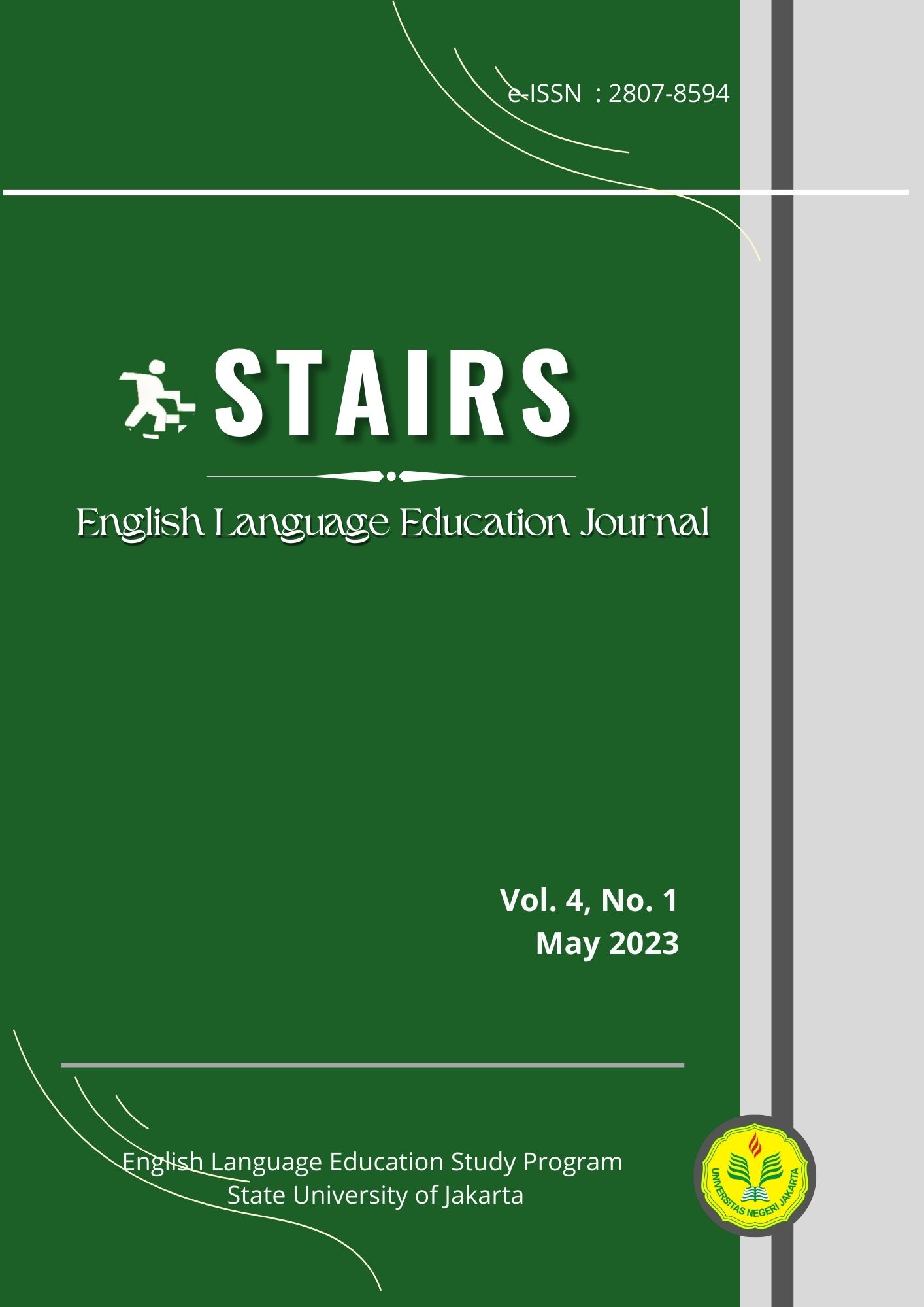Discourse Analysis of a News Text Using Cohesion and Ethnography of Speaking Theories
DOI:
https://doi.org/10.21009/stairs.4.1.6Keywords:
Cohesion, Contextual, Ethnography, News, TextualAbstract
The purpose of this study was to undertake a thorough study of a news article entitled "31 Policemen Questioned in Kanjuruhan Stadium Tragedy" by looking at both its contextual and textual elements. To analyze the data, the research used a content analysis and discourse analysis design. While the contextual study relied on Dell Hymes' ethnography of communication, notably the Speaking Model (Hymes, 1974), the textual analysis concentrated on the coherence devices given by Halliday and Hasan (1976). All essential elements, such as the setting, participants, ends, act order, key, instruments, and norms, were identified, according to the contextual analysis. The four content categories of reference, substitution, ellipsis, and conjunction were found in the textual analysis; however, the article did not fully contain all sub-categories.
References
Asfar, A. M. I. T. (2019). Analisis Naratif, Analisis Konten, dan Analisis Semiotik (Penelitian Kualitatif). DOI:10.13140/RG.2.2.21963.41767.
Bengtsson, M. (2016). How to Plan and Perform a Qualitative Study Using Content Analysis. NursingPlus Open, 2, 8-14. https://doi.org/10.1016/j.npls.2016.01.001
Bernhardt, S. A. (1980, Winter). Reviewed Work: Cohesion in English by M. A. K. Halliday, Ruqaiya Hasan. Style, Vol. 14(1), 47-50. https://www.jstor.org/stable/42945277 Dashela, T., & Mustika, Y. (2021). An Analysis of Cohesion and Coherence in Written Text of Line Today about Wedding Kahiyang Ayu and Bobby Nasution. SALEE: Study of Applied Linguistics and English Education, 2(2), 192-203. https://doi.org/10.35961/salee.v2i02.282
Diany Purnama Sari, Widiastuti, N.P. and Gunawan, I.M. (2020). Ethnography of Communication: The Analysis of Dell Hymes's Speaking in Balinese Wedding Proposal. BAHTERA: Jurnal Pendidikan Bahasa dan Sastra, 19(2), pp. 184–202. Available at: https://doi.org/10.21009/bahtera.192.01.
Erlingsson, C., & Brysiewicz, P. (2017). A Hands-on Guide to Doing Content Analysis. African Journal of Emergency Medicine, 7(3), 93-99. https://doi.org/10.1016/j.afjem.2017.08.001
Halliday, M. A. K., & Hasan, R. (1976). Cohesion in English. Longman Group Ltd.
Hymes, D. H. (1974). Foundations in sociolinguistics: An ethnographic approach. University of Pennsylvania Press.
Johnson, A. (2016). The Influence of Contextual Analysis on News Interpretation. Communication Research, 43(3), 356-378.
Luxemburg, et. al. (1992). Pengantar Ilmu Sastra (Cet. IV ed.). PT. Gramedia Pustaka Utama.
Rabbiah, S. (2012). Language as a Tool for Communication and Cultural Reality Discloser.
Ray, M., & Biswas, C. (2011). A Study on Ethnography of Communication: A Discourse Analysis with Hymes 'Speaking Model'. Journal of Education and Practice, Vol. 2(No. 6), 33-40. https://core.ac.uk/download/pdf/234633227.pdf
Setyawati, K. A. (2022). Ethnography of Communication: The Analysis of Dell Hymes' SPEAKING Model in the Communication among the Infertility Husband and Wife. Linguistics initiative, 2(1). https://doi.org/10.53696/27753719.2131
Shahnaz, A., & Imtiaz, A. (2014). How a Text Binds Together: Discourse Analysis of a Newspaper Article. International Journal of English and Education, Vol. 3, Issue:1.
Smith, J. (2017). The Importance of Contextual and Textual Analysis in News Interpretation. Journalism Studies, 18(5), 537-552.
Thompson, L., & Rodriguez, M. (2017). Rhetorical Strategies in News Texts: A Textual Analysis. Journalism & Mass Communication Quarterly, 94(4), 1127-1146.



